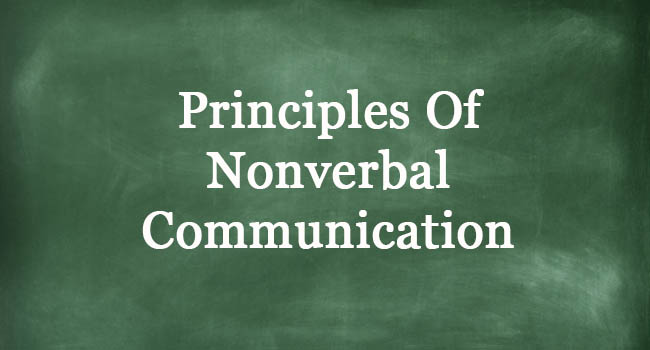What Are The Principles Of Nonverbal Communication?
PRINCIPLES OF NONVERBAL COMMUNICATION – In this topic, we are going to identify the following principles of nonverbal communication.

We must first know the definition of nonverbal communication.
Meaning
It is basically the communication without the need to use of spoken language, this includes gestures, facial expressions, and body positions (or also known as body language), and even including unspoken understandings and presuppositions.
Principles
According to Saylordotorg from GitHub, there are nine principles. Here are the following:
- Nonverbal Communication Is Fluid
- Nonverbal Communication is the conveying a message without the use of words, at the same time, it can also help or hinder the clear understanding of your message. However, it can also mask what you are really thinking, hence, the complexity.
- Nonverbal Communication Is Fast
- This type of communication is usually quicker than spoken language. To put it simply, you react first before you can even say a word. People could read how you feel before you even word it out.
- Nonverbal Communication Can Add to or Replace Verbal Communication
- Nonverbal communication has the capacity to boost your message or to do so without speaking with the use of gestures and such.
- Nonverbal Communication Is Universal
- Despite the diversity of nations and their languages, nonverbal communication remains a universal constant. Despite this having diversity of uses in different countries, its functions and displays remain the same.
- Nonverbal Communication Is Confusing and Contextual
- It is so complex that we need contextual hints to understand the meaning of every movement, gesture, or lack of display.
- Nonverbal Messages Communicate Feelings and Attitudes
- There is a saying that goes “Actions speak louder than words”. In relation, this type is used to convey feeling and reactions more often than spoken words.
- It Isn’t Always What We Say
- Our feelings would gradually change over time. What you truly felt today might not be the same tomorrow. For example, you might show a flash of anger and everyone responds at you negatively but that reaction would gradually change until it will feel like it never happened.
- It Is More Believable Than Verbal
- As mentioned above, we tend to react quickly before we could say anything and people surrounding you react more to your reaction first before your following spoken response.
READ ALSO: Manhid In English: Tagalog-English Translation Of “Manhid”
